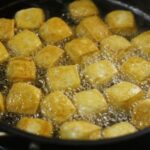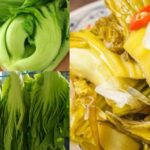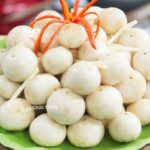Instructions:
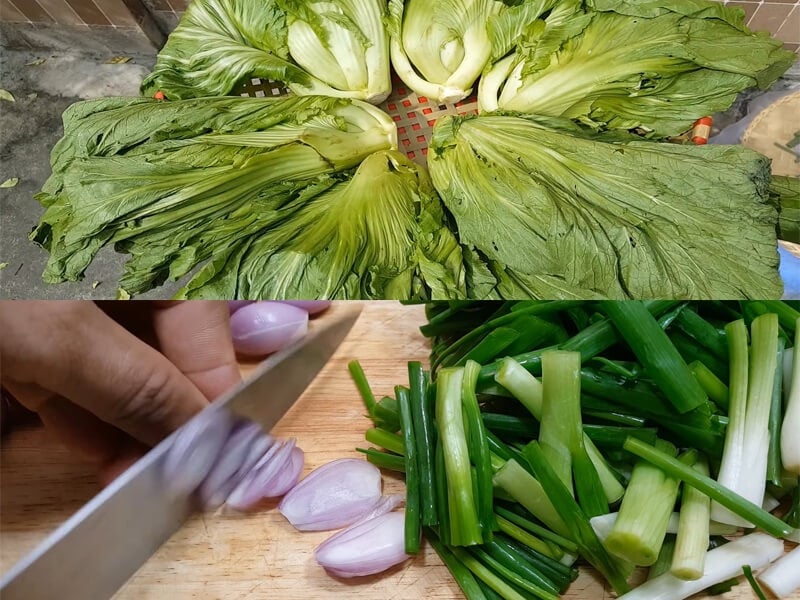
Preparing Mustard Greens for Pickling
– One kg of mustard greens, one liter of boiled water (cooled), 20g of sugar, 60g of large-grained salt, 3 small teaspoons of vinegar, onions, and scallions.
– For the best results, choose a ceramic, porcelain, or glass jar for pickling. Select mustard greens with large leaves. After purchasing, sun-dry the greens until they are slightly wilted.
– Clean the onions and scallions. Cut the mustard greens, onions, and scallions into 5cm long pieces.
– Prepare the pickling brine: Use boiled water that has cooled down to room temperature to prevent a film from forming on the pickles. Mix the brine with a ratio of 1 liter of water to 3 teaspoons of salt and 1 teaspoon of sugar. Add 3 small spoons of vinegar to help speed up the pickling process.
Sanitize the pickling jar and lid by submerging them in a pot of boiling water for about 10 minutes. Afterward, wipe them dry with a clean cloth or paper towel. If the jar and lid are not properly sanitized, there is a risk of dirt and impurities forming later on.
– Arrange the pickles in the jar, with the stems facing down first, and then cover with the leaves. Add the chopped onions and scallions. Place two crossed bamboo sticks (disposable wooden chopsticks can also be used) on top to keep the vegetables submerged and prevent discoloration. Firmly press the pickles.
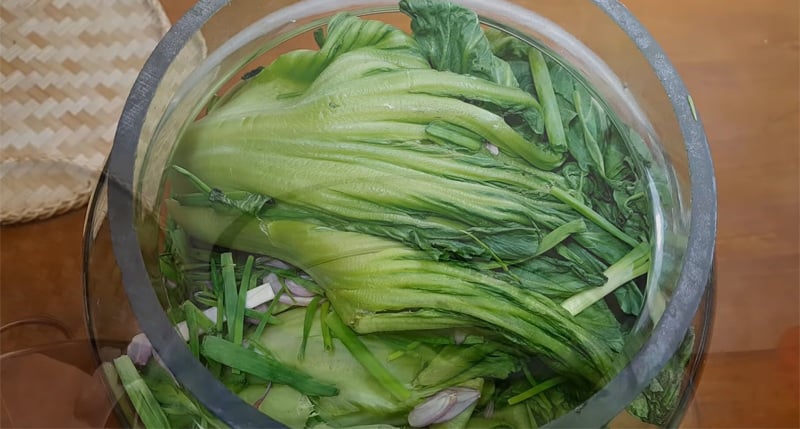
Soaking the Pickles to Absorb the Flavors
– Pour the brine mixture into the jar until it covers the vegetables. Leave the jar in a well-ventilated area for about 2 days, and the pickles will turn a delicious golden color. If there is sunlight available, expose the jar to direct sunlight for a day, and then move it to a cool place on the following day.
While the recipe may seem simple, not everyone can master the art of pickling. The most crucial step is getting the right amount of salt. Too much salt will make the pickles overly salty, while too little can cause them to spoil quickly. Sugar is essential to give the pickles a uniform golden color. If desired, you can also add a few slices of galangal to enhance the flavor.
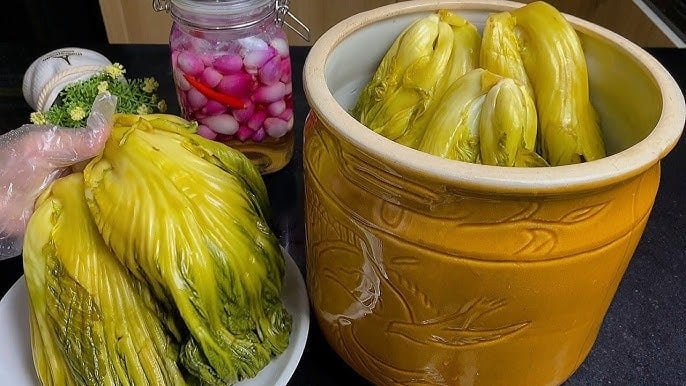
The Final Product: Golden, Crispy, and Delicious Pickled Mustard Greens
The Ultimate Guide to Cutting Board Care: Sun, Boil or Sterilize?
For moldy cutting boards, timely cleaning is essential to maintain hygiene. It is crucial to address the issue promptly to prevent the spread of mold and bacteria, which can be detrimental to your health. Effective cleaning methods include using a mild detergent or a mixture of vinegar and water, followed by thorough rinsing and drying. Regular maintenance and prompt action are key to keeping your cutting boards sanitary and safe for food preparation.
The Secret to Perfectly Crisp and Delicious White Salted Mustard Greens: A Simple Trick to Ensure They Stay Pristine and Vangiant-Free
“Pickled cabbage is a beloved Vietnamese delicacy with a crunchy, crisp texture and a delightful tang. The secret to achieving this perfect texture and pristine white appearance lies in a special ingredient added during the pickling process. This time-honored technique ensures a truly exceptional culinary experience, and we’re here to reveal the mystery behind it.”


























